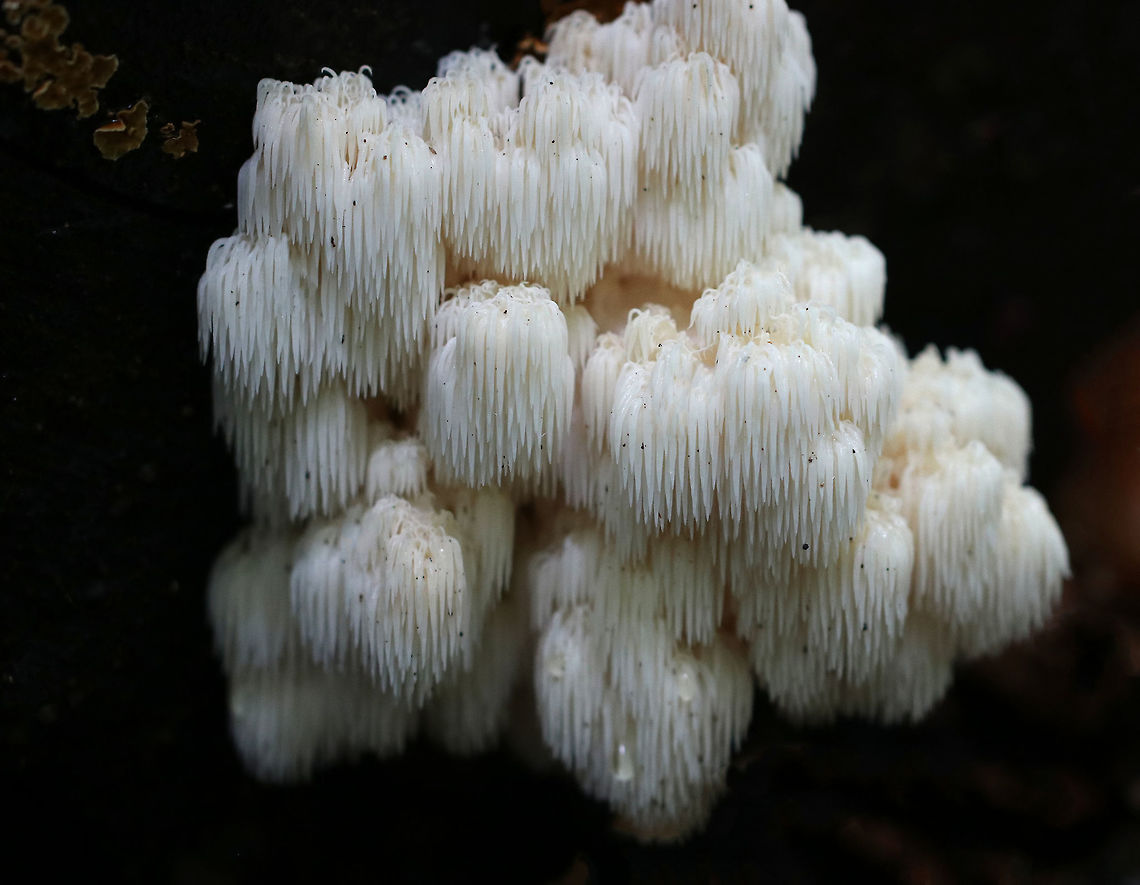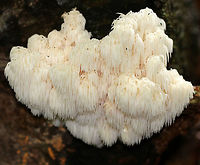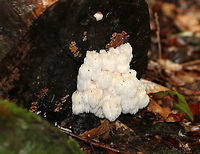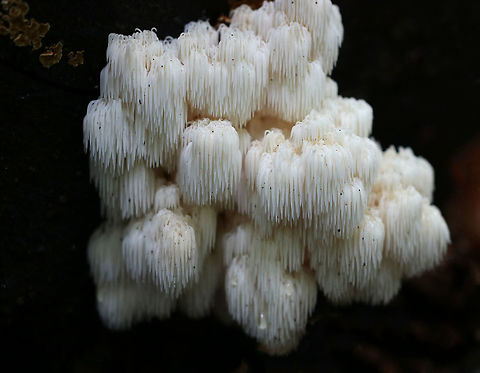 Promoted
Promoted
Bear's Head Tooth Fungus - Hericium americanum
10-15 cm wide and consisting of branches that arose from a rooting base. The spines were densely packed and were hanging from the branches in clusters. The spines were about 1 cm long.
Habitat: Growing on cut wood (hardwood, I think) in a mostly coniferous forest. I was higher up on the mountain when I spotted these on an edge below, and so I scurried down a cliff to get a closer look...But, didn't stay there long enough to get many shots!



''Hericium americanum'', commonly known as the bear's head tooth fungus, is an edible mushroom in the tooth fungus group. It was described as new to science in 1984 by Canadian mycologist James Herbert Ginns.

comments (11)
"Bear's Head Tooth Fungus - Hericium americanum-
Hericium americanum is a fungus within the Hericiaceae family. It is typically distributed east of the Great Plains of North America and can be found growing on rotting deciduous trees and stumps. Like its common name suggests, it has a branched fruiting body dominated by dense clusters of white spines. These distinctive features paired with its delectability make it (along with other species in the Hericium genus) a popular choice in foraging communities as it is not easily confused with potentially poisonous fungi.
Hericium americanum is considered saprobic, as it obtains its nutrients via the decomposition of dead organic matter. Saprobes may seem purely destructive, but they play a crucial part in maintaining the balance within ecosystems. By the process of decomposition, complex molecules are broken down into simpler ones (by exoenzymes) and ultimately returned to the soil for other organisms to utilize. Elements like nitrogen and phosphorus, necessities for biological systems, are "set free" from the organic matter through this mode of nutrition.
{Spotted in the Vermont, USA by JungleDragon moderator, Christine Young} #JungleDragon" Posted 6 years ago